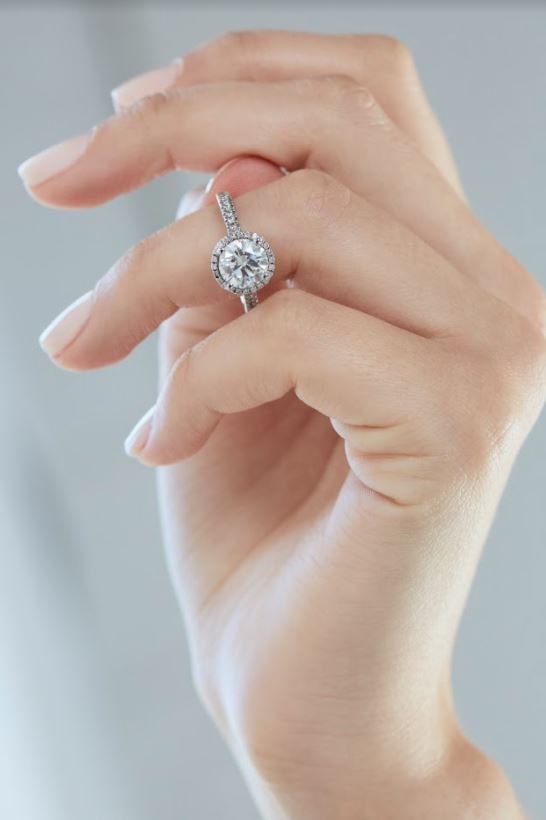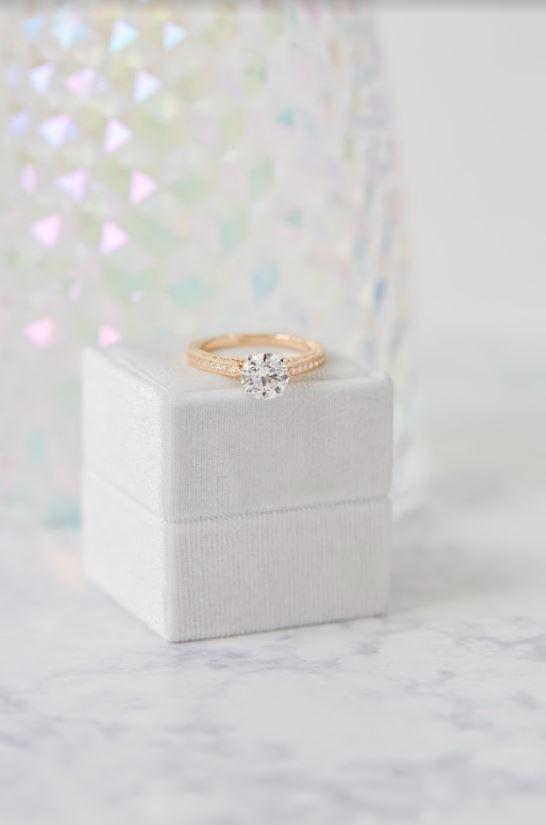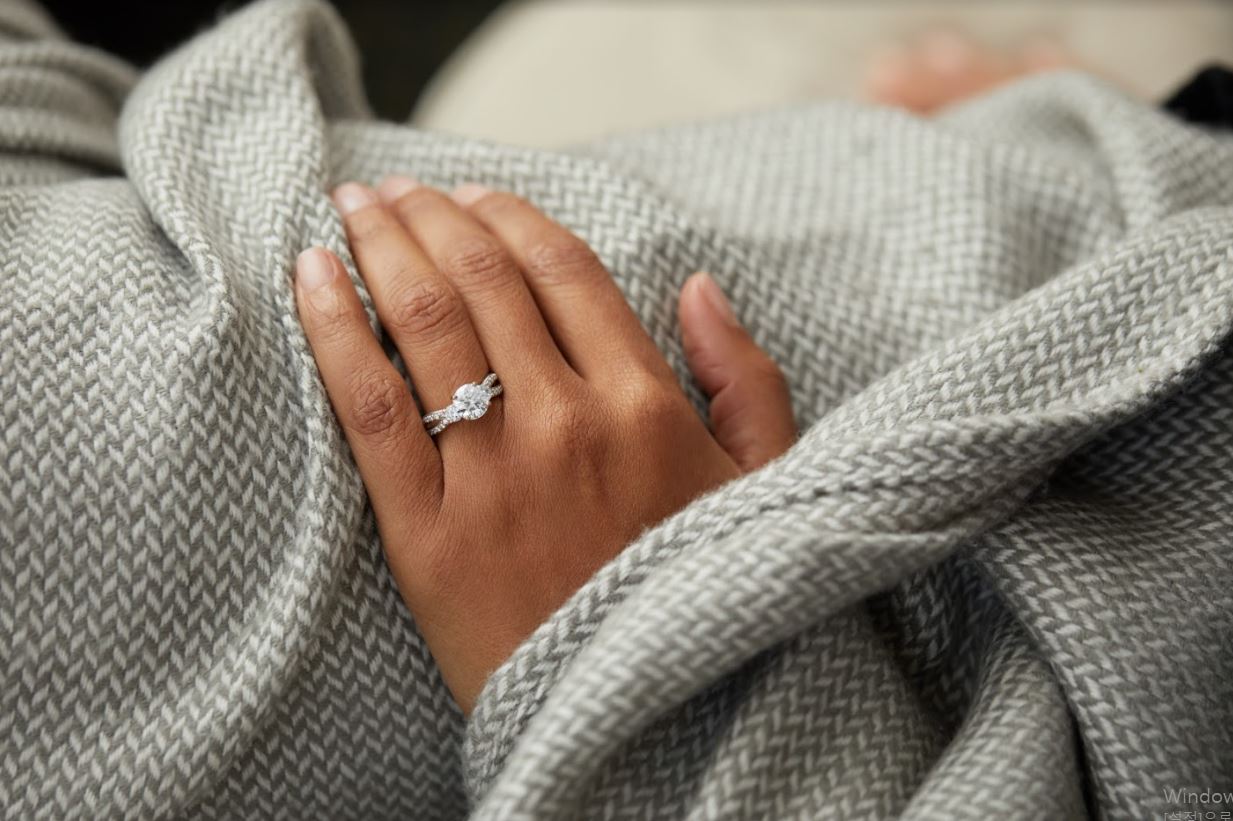Buying a diamond is an exciting experience. Not only do you walk away with an incredible treasure, but you get to dive into the wonderful world of diamonds. Unfortunately, this world can be overwhelming, as there are many options to choose from and a plethora of facts to learn.
If you want to ensure that you get the most out of your diamond purchase, you'll need to do your research beforehand. Luckily, this guide will walk you through everything you need to know about buying a diamond. Let's dive in!
Buying Online vs. In-Person
In-person diamond shopping has been the standard — many people always thought there wasn’t really any substitute for holding a diamond in your hand and experiencing its brilliance firsthand. However, in the past few years, it's got a challenger.
Buying your diamond online is becoming an increasingly popular option. It's a safe, pleasurable, and rewarding experience if you are prepared with the right strategies. Be sure to do your due diligence before making any online diamond purchase.
Ensure that the diamond has been graded, the vendor is legitimate, and that you have fail-safes in place to ensure you can make an easy return if the stone isn’t exactly what you were looking for. With the proper precautions, buying a diamond online can net you the gem of a lifetime.

The 4 C's
The 4 C's of diamonds are cut, clarity, carat, and color. These metrics are used to evaluate the characteristics of a diamond. Each metric of the 4 Cs will impact your diamond's appearance, especially if you choose a "fancy cut" or anything other than a round-brilliant diamond.
Though fancy cut diamonds aren't given a cut grade, understanding how fancy cut diamonds are affected by different quality standards will enable you to choose the best diamond for your needs.
Here's a breakdown of the 4 Cs:
-
Cut: The measure of quality in diamond cuts, focusing on how well the diamond interacts with light and its physical appearance.
-
Clarity: The presence of inclusions or blemishes in a diamond rated from FL (flawless) to I (included).
-
Color: The presence of color in a diamond. The diamond color scale is rated from D (colorless) to Z (light color).
-
Carat: This is the weight of a diamond, measured in carats or 200 milligrams.

Understanding Shape vs. Cut
A novice mistake, the terms shape and cut are often used interchangeably, but they are distinct attributes. Though it's an understandable mistake, as diamonds have to be cut into their shape.
That said, diamond shape refers to the outline of a diamond. For example, pear-shaped diamonds feature an outline similar to that of a teardrop.
Diamond cut refers to how a diamond has been cut to enhance the way it interacts with light and customizes its physical appearance. The standard diamond cut is brilliant, while the standard diamond shape is round. Hence, round-brilliant diamonds having the strictest grading requirements.
Mined vs. Lab-grown Diamonds
Traditionally mined diamonds have long held the throne as the most popular diamond option, but lab-grown diamonds are fast advancing as a contender.
Lab-grown diamonds are real diamonds that have been created in a lab setting, using advanced technology to form diamonds that are chemically, physically, and visually identical to mined diamonds.
Many shoppers are choosing lab-grown diamonds for their affordability. When you buy a lab-grown diamond, you get a real diamond for a fraction of the cost of a mined diamond. Not to mention, it's an ethical and eco-friendly option, as these diamonds are created in a lab setting, not mined using unsavory and energy inefficient practices.

Conclusion
Buying a diamond isn't for the faint of heart. It takes some research, patience, and a little luck. Of course, you've got all those things, so happy buying!
This article does not necessarily reflect the opinions of the editors or management of EconoTimes



 United Airlines Tokyo-Bound Flight Returns to Dulles After Engine Failure
United Airlines Tokyo-Bound Flight Returns to Dulles After Engine Failure  California Jury Awards $40 Million in Johnson & Johnson Talc Cancer Lawsuit
California Jury Awards $40 Million in Johnson & Johnson Talc Cancer Lawsuit  Nvidia Weighs Expanding H200 AI Chip Production as China Demand Surges
Nvidia Weighs Expanding H200 AI Chip Production as China Demand Surges  CMOC to Acquire Equinox Gold’s Brazilian Mines in $1 Billion Deal to Expand Precious Metals Portfolio
CMOC to Acquire Equinox Gold’s Brazilian Mines in $1 Billion Deal to Expand Precious Metals Portfolio  Blackstone Leads $400 Million Funding Round in Cyera at $9 Billion Valuation
Blackstone Leads $400 Million Funding Round in Cyera at $9 Billion Valuation  noyb Files GDPR Complaints Against TikTok, Grindr, and AppsFlyer Over Alleged Illegal Data Tracking.
noyb Files GDPR Complaints Against TikTok, Grindr, and AppsFlyer Over Alleged Illegal Data Tracking.  SUPERFORTUNE Launches AI-Powered Mobile App, Expanding Beyond Web3 Into $392 Billion Metaphysics Market
SUPERFORTUNE Launches AI-Powered Mobile App, Expanding Beyond Web3 Into $392 Billion Metaphysics Market  Coca-Cola’s Proposed Sale of Costa Coffee Faces Uncertainty Amid Price Dispute
Coca-Cola’s Proposed Sale of Costa Coffee Faces Uncertainty Amid Price Dispute  Amazon in Talks to Invest $10 Billion in OpenAI as AI Firm Eyes $1 Trillion IPO Valuation
Amazon in Talks to Invest $10 Billion in OpenAI as AI Firm Eyes $1 Trillion IPO Valuation  Nomura Expands Alternative Assets Strategy With Focus on Private Debt Acquisitions
Nomura Expands Alternative Assets Strategy With Focus on Private Debt Acquisitions  Apple Explores India for iPhone Chip Assembly as Manufacturing Push Accelerates
Apple Explores India for iPhone Chip Assembly as Manufacturing Push Accelerates  SpaceX Begins IPO Preparations as Wall Street Banks Line Up for Advisory Roles
SpaceX Begins IPO Preparations as Wall Street Banks Line Up for Advisory Roles  iRobot Files for Chapter 11 Bankruptcy Amid Rising Competition and Tariff Pressures
iRobot Files for Chapter 11 Bankruptcy Amid Rising Competition and Tariff Pressures  Korea Zinc Plans $6.78 Billion U.S. Smelter Investment With Government Partnership
Korea Zinc Plans $6.78 Billion U.S. Smelter Investment With Government Partnership  Woolworths Faces Fresh Class Action Over Alleged Underpayments, Shares Slide
Woolworths Faces Fresh Class Action Over Alleged Underpayments, Shares Slide  Strategy Retains Nasdaq 100 Spot Amid Growing Scrutiny of Bitcoin Treasury Model
Strategy Retains Nasdaq 100 Spot Amid Growing Scrutiny of Bitcoin Treasury Model 































